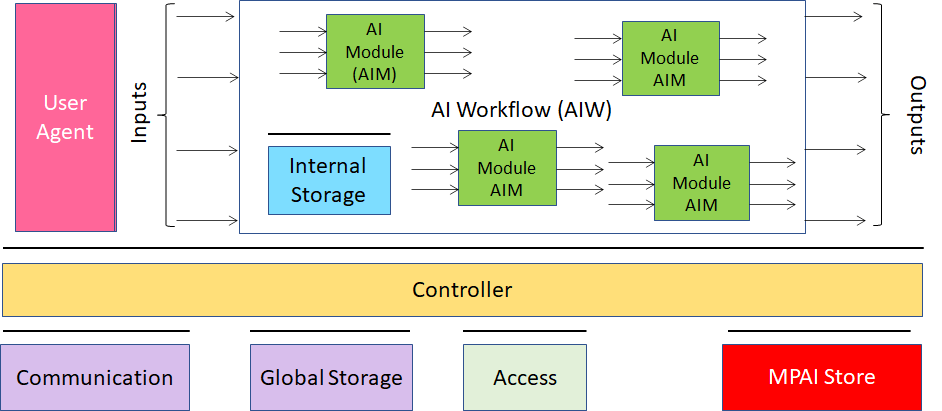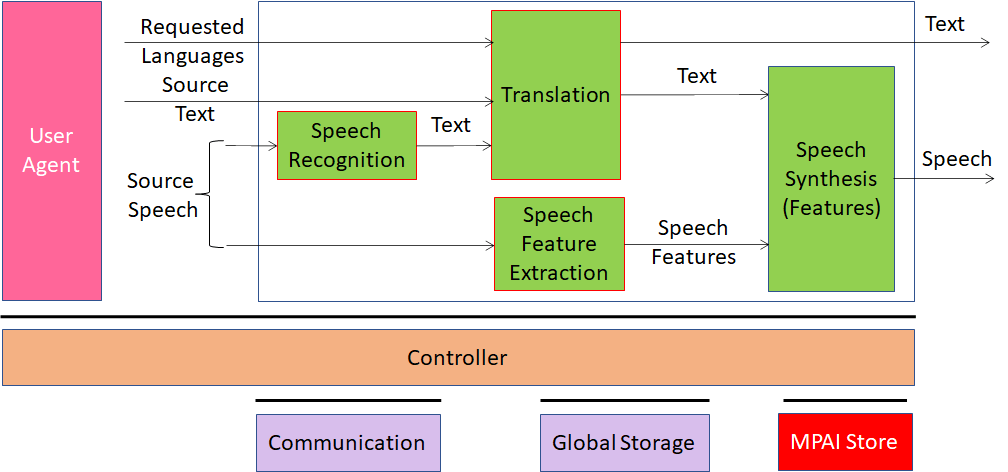Artificial Intelligence is not just another technology coming to the fore as humankind has seen many times before. By mimicking the way humans interpret and act on the new based on their experience, AI may influence its users in subtle ways.
The MPAI Statutes read that MPAI’s mission is to produce standards for Moving Picture, Audio and Data Coding by Artificial intelligence. While Moving Pictures and Audio have been singled out in the mission because of their importance, ultimately they are “Data”. Therefore, from now on we will only talk about Data.
The most immediate example of Data Coding is data compression. If the machine doing the compression, after a careful training, has learnt that certain patterns are more common than others, it will probably perform better than a machine that has been hardwired to perform certain operations by a human who has understood how certain patterns appear and devised a mechanism to exploit those patterns. By growing in age, humans understand that the world is always more complex that it was assumed to be before.
It is the age of the power of the numbers vs the ingenuity of the human that AI heralds.
A more interesting example of Data Coding is feature extraction. The machine called “human eye and brain” has few if any machines capable to compete with it in its ability to recognise objects. Even a short period of learning is sufficient to a newly born to recognise the faces of the people and the objects in the environment. After decades, the object recognition ability of the adult grown from the child exposed to a broad experience is very high. If the adult, however, has lived in an environment where “being different” is associated with a negative connotation, it is more likely that an object with those features will have a negative connotation. Think about how certain cultures handle certain objects or words.
Machine learning is no different. As much as education can largely influence the future behaviour of a child, the way a machine is trained influences the way that machine will respond to future stimuli.
The above is not a general warning about anything related with Artificial Intelligence. If you use a video codec where AI improves the efficiency of a traditional video codec, you should not be expect that, because of the way the codec has been trained, the codec will show you a cat when the original animal was a dog. But if you use a system that assesses the performance of a company using AI, you may discover that a company with certain combinations of features is judged negatively simply because the cases used in the training phase were associated with a negative performance.
Again, AI is not like any other technology. It would be irresponsible for MPAI to simply care about development and publication of its standards and not to care about the their ultimate use.
With its notion of MPAI ecosystem, MPAI has developed a strategy that allows end users to find implementations that have a level of “guarantee” that depends on the thoroughness of the “review”.
The way MPAI implements its ecosystem is based on the following elements:
- MPAI standardises an environment – called AI Framework (AIF) – in which AI-based applications – implemented as AI Workflows (AIW) are executed. AIWs are composed of mostly AI-based basic components – called AI Modules (AIM). The architecture of the AIF with its components is sketched in Figure 1.

Figure 1 – Architecture and Components of the AI Framework (AIF)
- MPAI develops application standards, i.e., collections of use cases belonging to an application domain such as “audio enhancement” or “multimodal conversation” or “financial data” which specify the AIWs and their AIMs implementing well-identified use cases. Standardisation is lightweight because
- For AIWs: only functions, and formats and semantics of the input and output data and the interconnections of the AIMs are specified
- For AIMs: only functions, and the formats and semantics of the input and output data are specified.
An example of Use Case is “Unidirectional Speech Translation”. The AIW of Figure 2 interprets a Speech Segment uttered in a specified language to another specified language preserving the characteristics of the original speech. Figure 2 depicts an AIW standardised by MPAI-MMC, called “Unidirectional Speech Translation”.

Figure 2 – An AIW example
- MPAI additionally specifies the way
- To test the conformance of an AIF-AIW-AIM implementation with the standard
- To assess the performance of an AIW-AIM implementation. Performance of an implementation is defined as the support of the attributes of Reliability, Robustness, Replicability and Fairness.
- MPAI appoints performance assessors, entities with the task to assess the performance of an implementation.
- MPAI define interoperability as the ability to replace an AIF, AIW or AIM implementation with a functionally equivalent implementation. MPAI defines 3 interoperability levels of an AIF implementation that run an AIW composed of AIMs:
- Executing any proprietary function and exposing any proprietary interface (Level 1).
- With functions and interfaces specified by an MPAI Application Standard (Level 2).
- Certified by a performance assessor (Level 3).
- MPAI establishes and oversees the not-for-profit commercial company “MPAI Store”, that distributes implementations of MPAI standards. Depending on the interoperability level of the implementation, the MPAI Store performs the following functions: tests security and conformance of AIFs, AIWs and AIMs, and assesses performance of AIWs and AIMs.

Figure 3 – Operation of the MPAI ecosystem
MPAI has developed the Governance of the MPAI Ecosystem WD0.4 and is seeking comments from the MPAI community. Comments should be provided by 20 September 2021 on time for review before adoption of the document by the MPAI General Assembly (MPAI-12) on 30 September.
